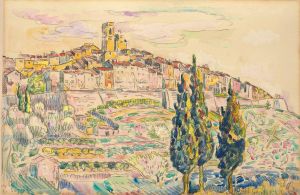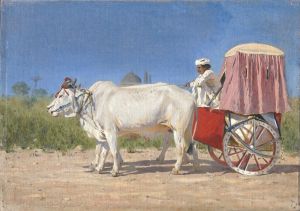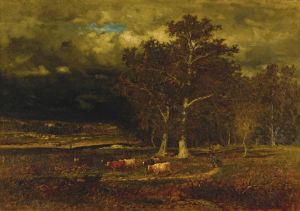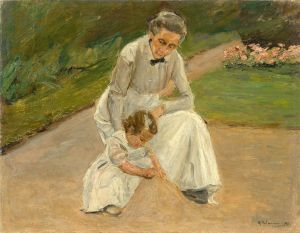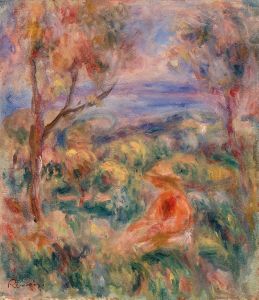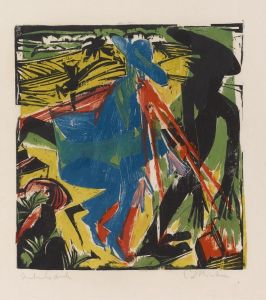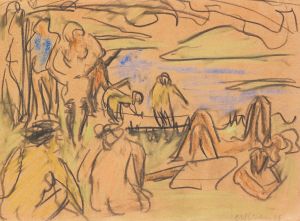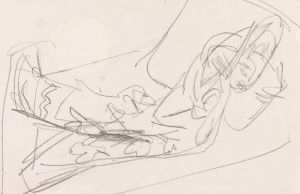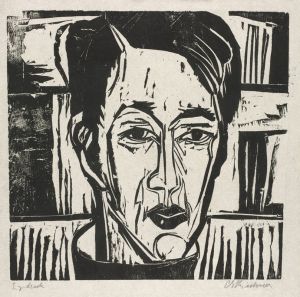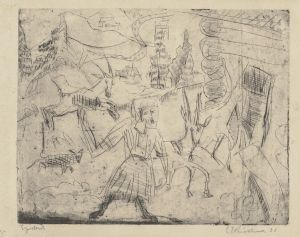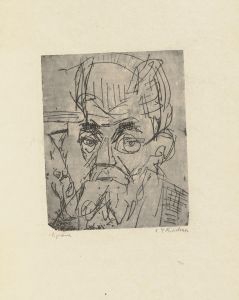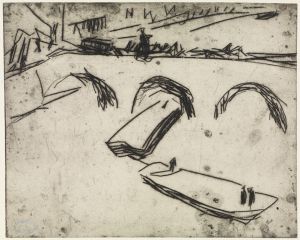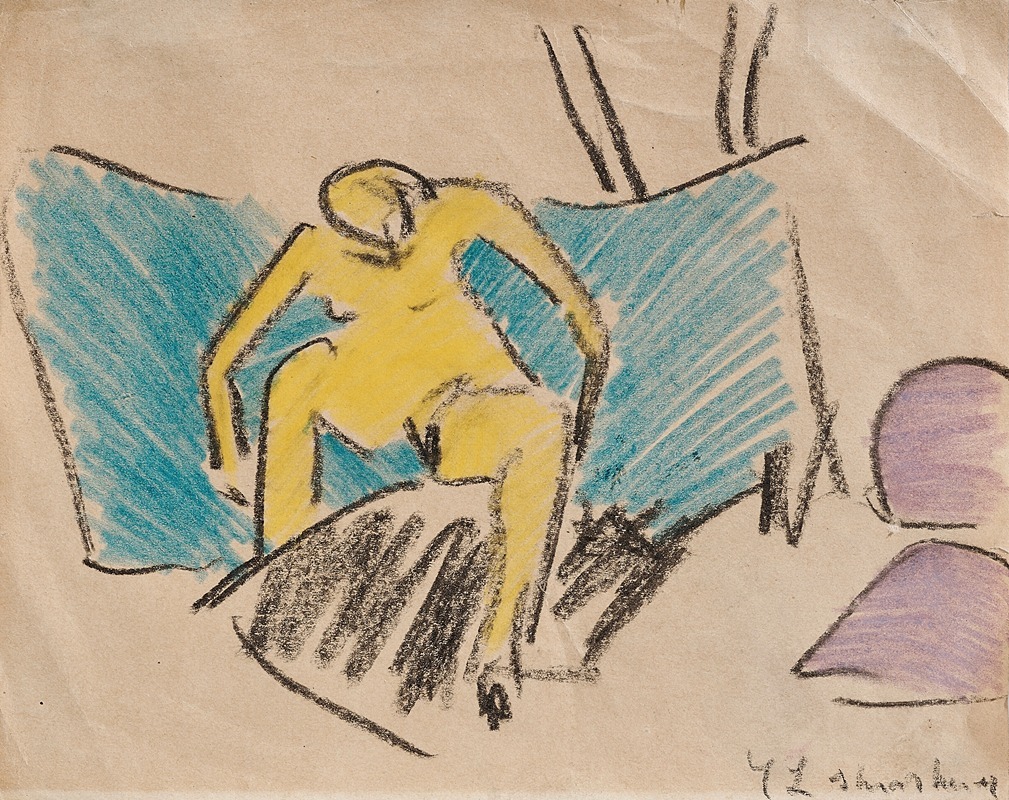
Badende
A hand-painted replica of Ernst Ludwig Kirchner’s masterpiece Badende, meticulously crafted by professional artists to capture the true essence of the original. Each piece is created with museum-quality canvas and rare mineral pigments, carefully painted by experienced artists with delicate brushstrokes and rich, layered colors to perfectly recreate the texture of the original artwork. Unlike machine-printed reproductions, this hand-painted version brings the painting to life, infused with the artist’s emotions and skill in every stroke. Whether for personal collection or home decoration, it instantly elevates the artistic atmosphere of any space.
Ernst Ludwig Kirchner's painting Badende (translated as Bathers) is a notable work by the German Expressionist artist, who was a founding member of the art movement Die Brücke (The Bridge). Created during the early 20th century, the painting reflects Kirchner's interest in themes of nature, the human figure, and the liberation of modern art from traditional academic constraints.
Kirchner often depicted scenes of nudes in natural settings, which were central to the Die Brücke group's philosophy of reconnecting with a more primal and unrestrained way of life. Badende exemplifies this approach, showcasing figures in a simplified, angular style that emphasizes movement and vitality. The use of bold, non-naturalistic colors and dynamic compositions is characteristic of Kirchner's work and the Expressionist movement as a whole. These stylistic choices were intended to convey emotional intensity and a sense of immediacy, rather than a realistic depiction of the scene.
The painting reflects Kirchner's fascination with the human body and its relationship to the natural world. The figures are often depicted in a state of harmony with their surroundings, emphasizing a sense of freedom and unity. This theme was influenced by the group's frequent retreats to rural locations, where they engaged in outdoor activities such as swimming and hiking, often in the nude. These experiences were integral to their artistic practice and philosophy, as they sought to break away from the constraints of urban life and industrialization.
Kirchner's work, including Badende, was shaped by the broader cultural and artistic currents of his time. The Expressionist movement emerged as a reaction against the rapid modernization and societal changes of the early 20th century, and artists like Kirchner sought to explore deeper emotional and spiritual truths through their art. His paintings often reflect a tension between the idyllic and the unsettling, capturing both the beauty and the fragility of human existence.
While specific details about the creation date or current location of Badende may vary depending on the particular version or series of works with this title, the painting remains an important example of Kirchner's contribution to modern art. His innovative approach to form, color, and subject matter has had a lasting impact on the development of 20th-century art, and his works continue to be celebrated in museums and collections worldwide.





